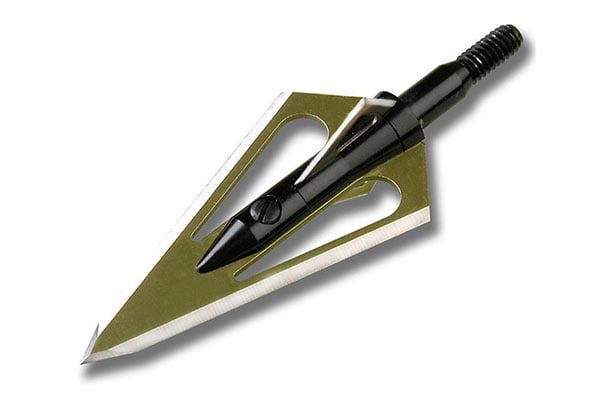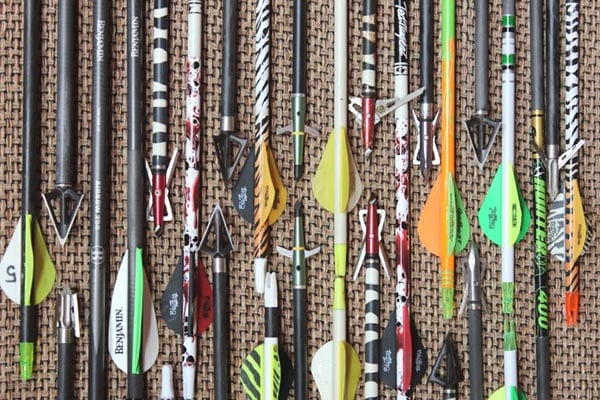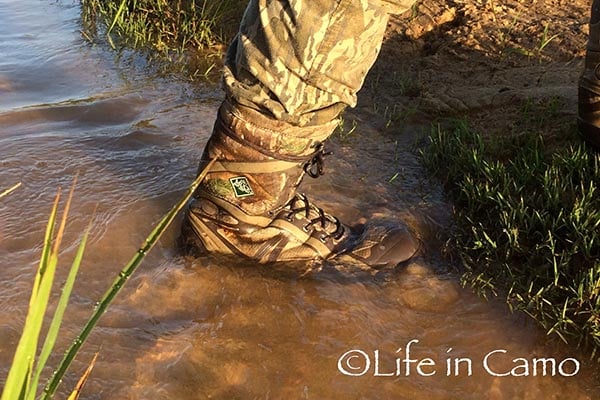Last Updated on
By Jason Reid
While broadhead choices boil down to one’s personal preference and brand loyalty, we hunt in an age of specialized gear. Broadheads are now specifically designed to handle different species of game. However, do we as hunters always match a broadhead to the game they are chasing? Properly matching the broadhead to the game you are chasing should always be given thought well in advance. While the debate will always be present, here are guidelines to follow when making your broadhead decisions. When looking over the various options of fixed blade broadheads to take on your long–awaited hunting excursion, ask yourself these questions:
- What is the anticipated shooting distance?
- What kind of arrow weight are you shooting?
- What poundage is your bow set at?
- What is the average weight of a mature animal?
- What is the average body cavity size of my target animal?
- Is it early or late in the fall?
This will help narrow down options because the heavier the animal, the broader their chest cavity will be, the heavier hides and tougher bones they will have. Pushing an arrow deep into the vitals of a big animal combines several factors considering arrow weight and bow poundage
When considering the variety of options for your next hunt, consider the different styles of fixed blade broadheads. Chisel point broadheads with replaceable blades and cut on contact broadheads make up this category. Both serve specific purposes and have benefits for different types of game animals. Fixed blades are regarded as more reliable since you are not forcing the blades to open, removing any doubt as to whether or not the broadhead will cut through a target. Mechanical broadheads give shooters several design options like rear deploying blades or the classic jackhammer design in which the blades open upon hitting the target.
Chisel Point
Chisel Point broadheads have been a staple in the archery gear diet since the development of modern hunting point and are most often associated with fixed-blade designs. Chisel point broadheads are popular among whitetail and elk bow hunters since they are reusable and can handle hitting tough bones like shoulders and ribs without deflecting. Ramcat broadheads provide a great example of a fixed blade broadhead with replaceable blades with the ability to maintain the structural integrity while driving through hide and bone. A chisel point cuts through hide by first opening the hide before the blades and helps the arrow maintain the desired course without deflecting.
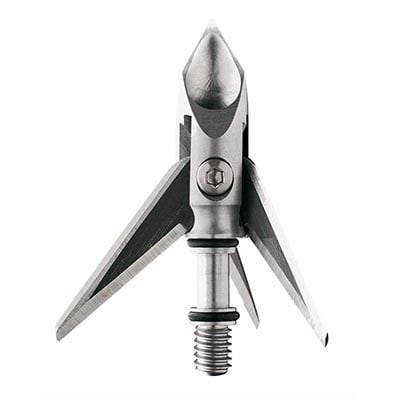
Cut-On-Impact
Cut-on-impact broadheads begin slicing as soon as they hit the target. Since they slice instead of boring a hole into the hide of an animal first, cut-on-impact broadheads penetrate their target deeper. If you are in a situation where your gear provides less energy for driving deep through the soft tissue of an animal, cut-on-impact broadheads may be your best choice. This style of hunting point is a favorite for hunters choosing recurve and long bows and others shooting low poundage bows. However, if you find yourself hunting the upper levels of the big game spectrum for animals like elk, caribou, moose, and large predators like coastal brown bears, interior grizzlies and even black bears, electing to use a cut-on-impact broadhead like the Montec may be one of your best choices. Magnus broadheads are a great example of a cut on impact broadhead. As a COI two-blade with serrated edges they have been a favorite for bow hunters since and can drive deep into the large chest cavities of the toughest game on the North American continent. When hunting game with thick hides and heavy bones, choosing a tough cut-on-impact broadhead can make the difference as they do not slow down upon hitting the target.
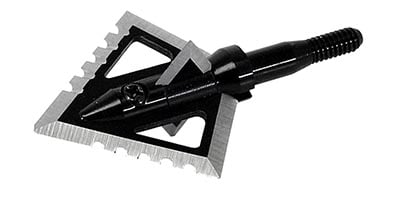
Mechanical
As technology improves and designs become more sophisticated, mechanical broadheads have become a popular choice of bow hunters since they provide a wider cutting surface than fixed blade broadheads. Because of the opening motion the broadhead makes upon hitting its target, mechanical broadheads have been the focus of debate for the better part of the past three decades. Mechanical broadheads are useful for shooting long distances out of higher poundage bow since they fly like a field point and have been generally regarded as more accurate. The frustration of archers with the fine tuning of larger fixed blade broadheads have pushed many to use mechanicals. Mechanical broadheads also give shooter the choice between cut-on-impact broadheads and chisel point.
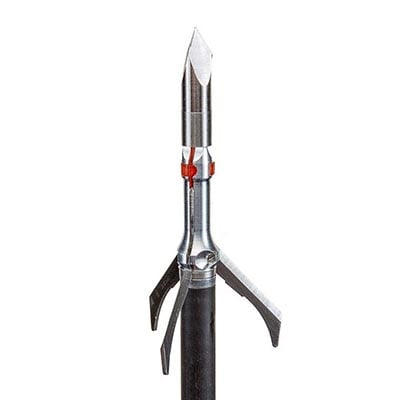
Arrow Pairing
Broadheads are the business end of the arrow, but good business is no good without the structure behind it. Choosing the right arrow is vital to bow hunting success. The last thing you want to find yourself with in the woods is a mismatching set up which creates problems like finding out your arrow is too light and is essentially the equivalent of a pool noodle pushing a bowling ball. For big game hunting find an arrow with between 8.5 and 10.5 grains per inch with a minimum of a 400 spine. This will give your broadhead more than enough weight pushing it to drive it deep into your target.
What’s Right For You?
If you are hunting animals over four hundred pounds like elk and moose where their body cavities can exceed two feet in length, running a cut-on-impact head may be your desired choice. Think about driving an arrow at least 18 inches into the vitals in order to pierce both sides of vital organs. If you know your average shot can exceed 40 yards then you will want to use a cut-on-impact fixed-blade in order to minimize energy loss to drive through thick hide. While elk can be killed with cut-on-impact and chisel points, game like moose and the big bears, which are much larger than elk, cutting through thick fall hides are not something you want to get stopped by because of a weak broadhead. If you are hunting game like deer on the plains or mountain mule deer, even sheep, a fixed blade chisel point or mechanical broadhead will hold a consistent flight at a longer distance and provide sufficient penetration. The smaller bodied big game specs have relatively thinner hides than those of large big game and are extremely susceptible to the impact of a chisel point or mechanical broadhead.
Broadhead choice boils down to knowing the game you are chasing, your equipment and your comfort level. Taking the time to understand these three aspects will make a difference in going home with a full freezer and tag soup.
